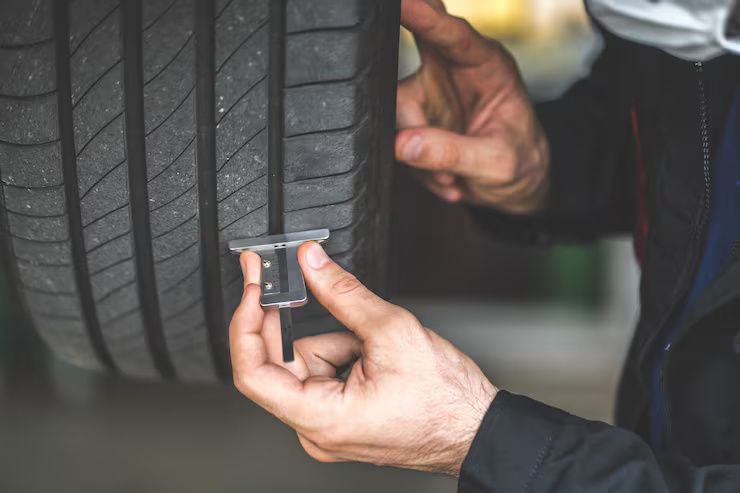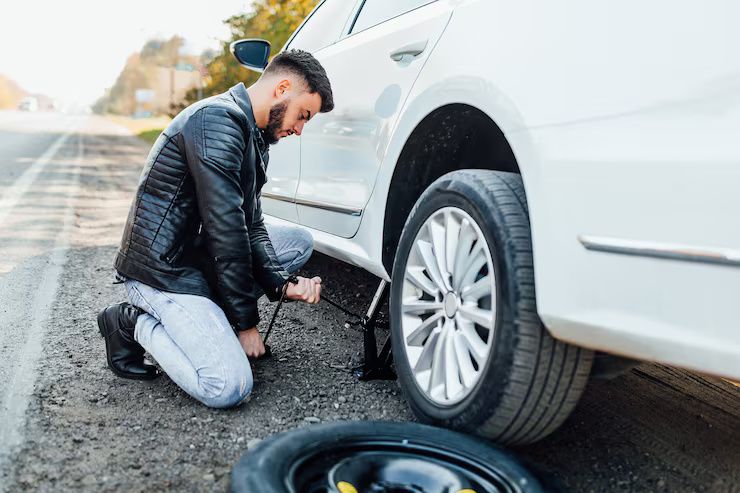Choosing the right tires means matching your vehicle’s requirements, driving conditions, and safety needs. Tires connect a vehicle to the road and influence handling, fuel economy, braking, and comfort. The variety of tire types exists because drivers face different climates, surfaces, and usage patterns
Today, selecting the proper tires affects almost every vehicle owner, especially:

-
Daily commuters and families
-
Fleet managers and delivery drivers
-
EV owners who need optimized low-resistance tires
-
Drivers in areas with extreme seasonal weather
Choosing the wrong tire can result in:
-
Reduced braking ability and grip
-
Increased risk in wet or snowy conditions
-
Lower fuel or battery efficiency
-
Faster wear and more frequent replacements
-
Non-compliance with legal safety standards
Proper tire selection:
-
Increases safety and confidence on the road
-
Helps reduce long-term vehicle maintenance costs
-
Improves ride comfort and handling
-
Extends the life of the tire and vehicle systems
Recent updates – 2024–2025 trends in the tire industry
The tire market has evolved significantly over the past year. Key developments include:
| Trend | Description |
|---|---|
| EV‑specific tires | More models feature low rolling resistance, reduced noise, and durability |
| All-weather tire growth | These hybrids are replacing separate summer/winter tire sets for many drivers |
| Tire wear and microplastic focus | New materials aim to reduce pollution from tire particles |
| Smart tires with embedded sensors | Some premium models include real-time pressure and wear tracking |
| Rise of online tire shopping | Consumers increasingly research and purchase tires online |
| Increased regulations on labeling | Labels now provide clearer data on wet grip, noise level, and efficiency |
These trends reflect a shift toward sustainability, digital convenience, and tailored solutions for electric vehicles and changing driving habits.
Laws or policies – Tire regulations and safety requirements
In most countries, tire usage is subject to road safety laws. Here are some typical examples (applicable in the US and many parts of Europe):
-
Tread Depth Minimums
Most jurisdictions require a minimum tread depth of 2/32 inch (approximately 1.6 mm). Some regions, especially those with wet or snowy conditions, recommend or enforce higher minimums. -
Tire Age Limitations
Tires older than six years—even if unused—can become unsafe due to rubber degradation. Inspections for tire date codes (found on sidewalls) are advised during annual checks. -
UTQG Ratings (in the US)
Tires are labeled with treadwear, traction, and temperature ratings to guide consumers. For example, a higher treadwear number typically means a longer lifespan. -
Labeling in Europe
EU regulations require tires to display information on rolling resistance (fuel efficiency), wet grip, and external noise. This helps consumers make more informed choices. -
Winter Tire Mandates
In snowy regions, seasonal tire laws may require the use of winter-rated tires (with the 3PMSF symbol) during specific months.
Non-compliance can result in safety risks, vehicle damage, and even legal penalties.
Tools and resources – Aids to help with tire selection
Here are helpful resources and methods to guide tire selection and monitoring:
Tire type selection tools:
-
Vehicle manufacturer recommendations (manual or inside driver door)
-
Online tire match systems based on make, model, and trim
-
Climate-based guides (e.g., comparing all-season to winter tires)
Tread monitoring tools:
-
Manual tread depth gauges
-
The “penny test” for minimum depth estimation
-
Smartphone apps to log tire rotations and wear patterns
Comparison resources:
-
UTQG rating charts to compare grip and durability
-
Reviews or test-based comparisons for performance, noise, and wear
-
Spreadsheets or templates to track tire purchase dates and mileage
Replacement planning:
-
Maintenance planners that remind you of tire age
-
Digital checklists for seasonal changes or rotations
-
Safety check cards for visual inspection of cracks, bulges, or cuts
Tread depth and safety visual table
| Tread Depth (mm) | Performance Level | Recommended Action |
|---|---|---|
| 8–9 mm | New tires | Optimal safety and performance |
| 4–6 mm | Mid-life | Monitor; suitable for dry conditions |
| 2–3 mm | Legal minimum approaching | Replace soon for wet safety |
| < 1.6 mm | Below legal limit (in many regions) | Immediate replacement required |
Maintaining tread depth not only keeps you legal but significantly improves traction, especially in wet or icy conditions.
FAQs – Common questions and simple answers
How do I know which size tire fits my vehicle?
You can find the correct tire size in your vehicle owner’s manual or on the driver-side door label. Sizes look like "205/55R16."
When should I replace my tires?
Tires should be replaced when tread depth reaches 2/32 inch, when they are visibly damaged, or when they are older than six years—even if they appear unused.
Are all-weather tires better than all-season?
All-weather tires perform better in winter conditions compared to all-season tires. They are a good year-round option in climates with mild snow but are not a full substitute for dedicated winter tires in severe conditions.
How does tire choice affect fuel efficiency?
Low rolling resistance tires reduce friction and help improve fuel economy or electric range. Look for tires labeled with high efficiency or “eco” performance indicators.
Is it okay to buy tires online?
Yes, buying tires online is safe if done from reputable sources. Many platforms also offer delivery and local installation options. Always check compatibility and return policies.
Final Thought
Tires are a foundational element of driving safety and vehicle performance. Choosing the right set means more than just matching size—drivers must consider climate, vehicle type, regulations, and wear patterns. With modern trends such as EVs, smart features, and sustainable materials, tire decisions are more relevant than ever.

